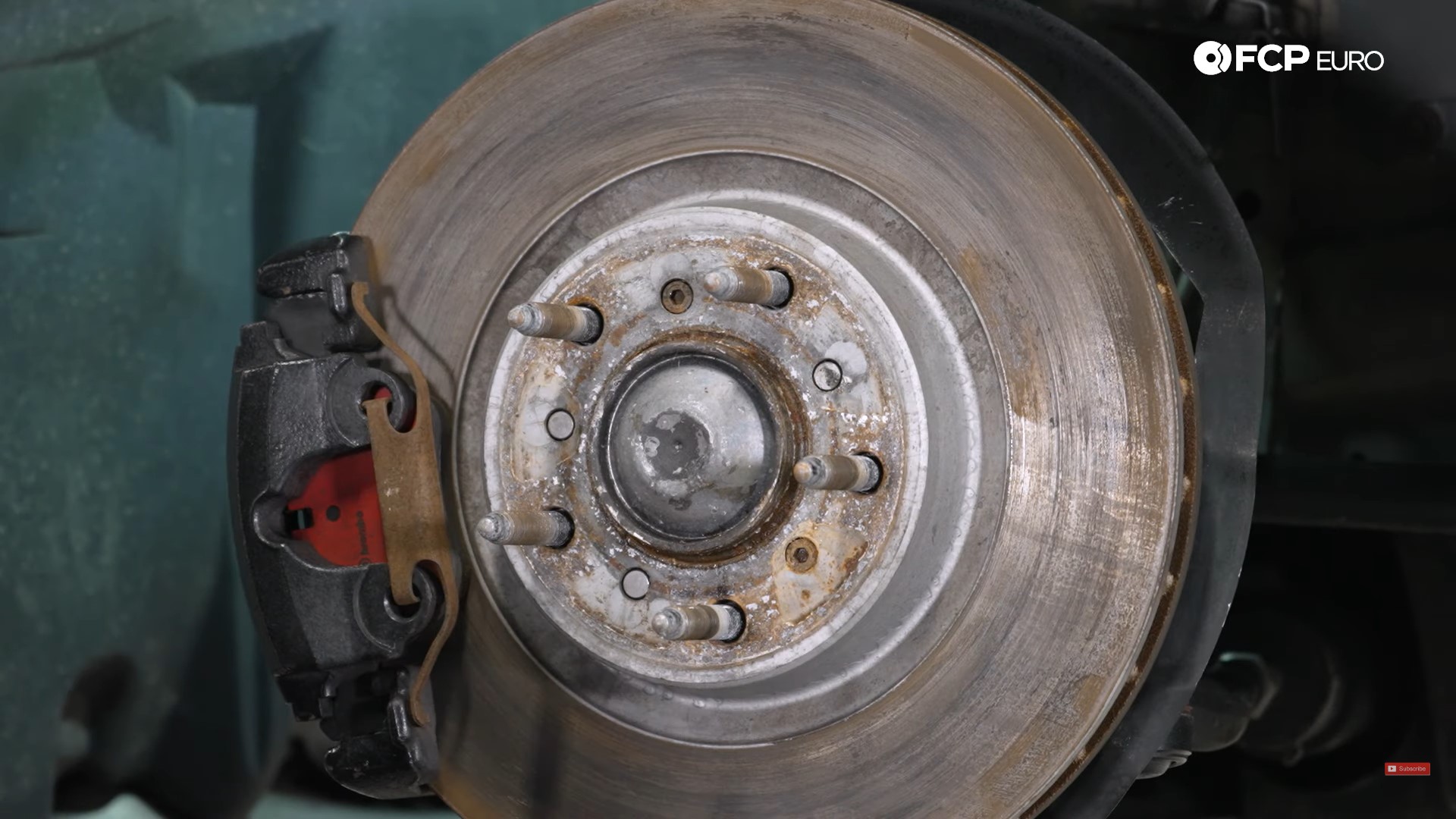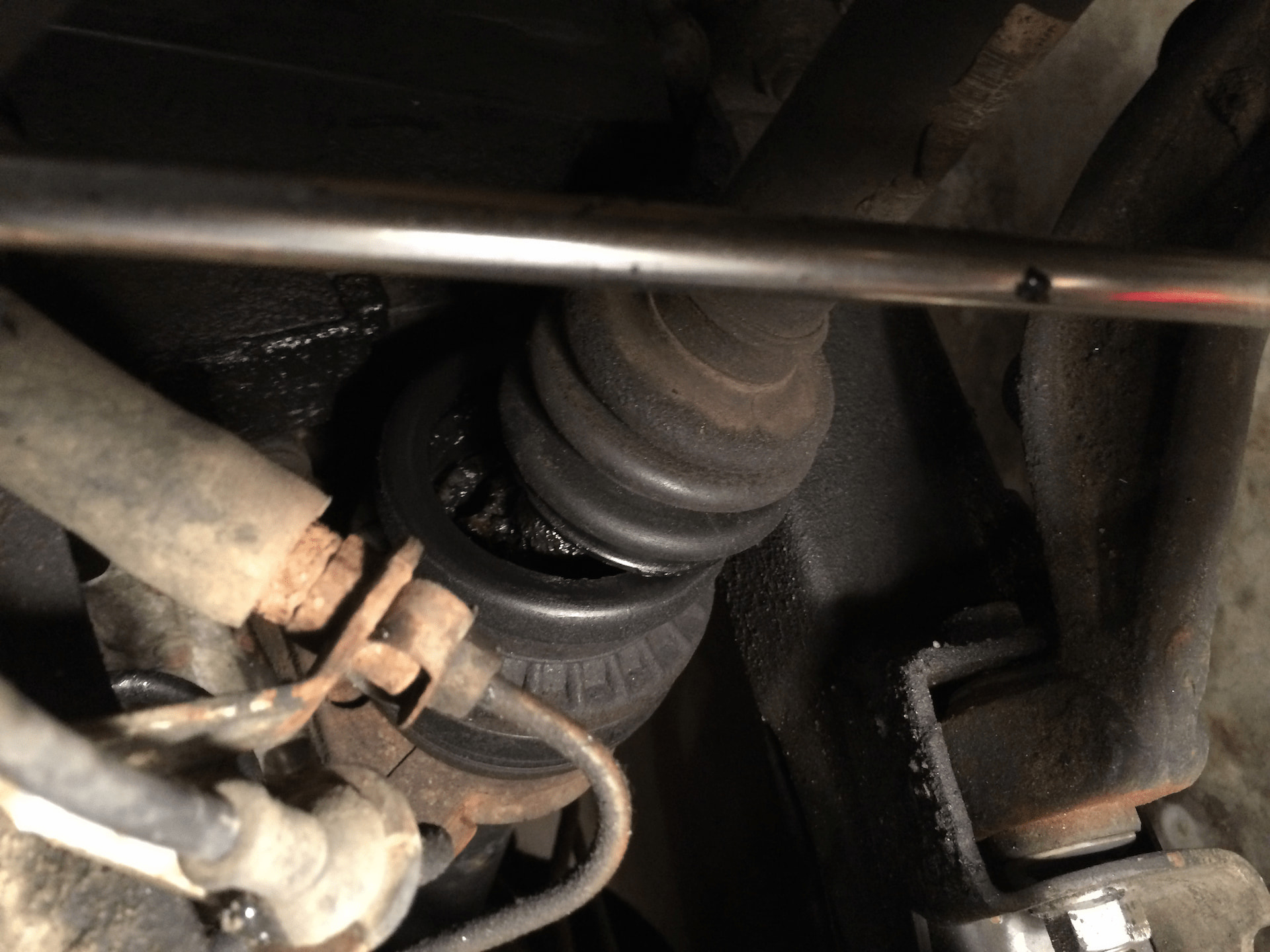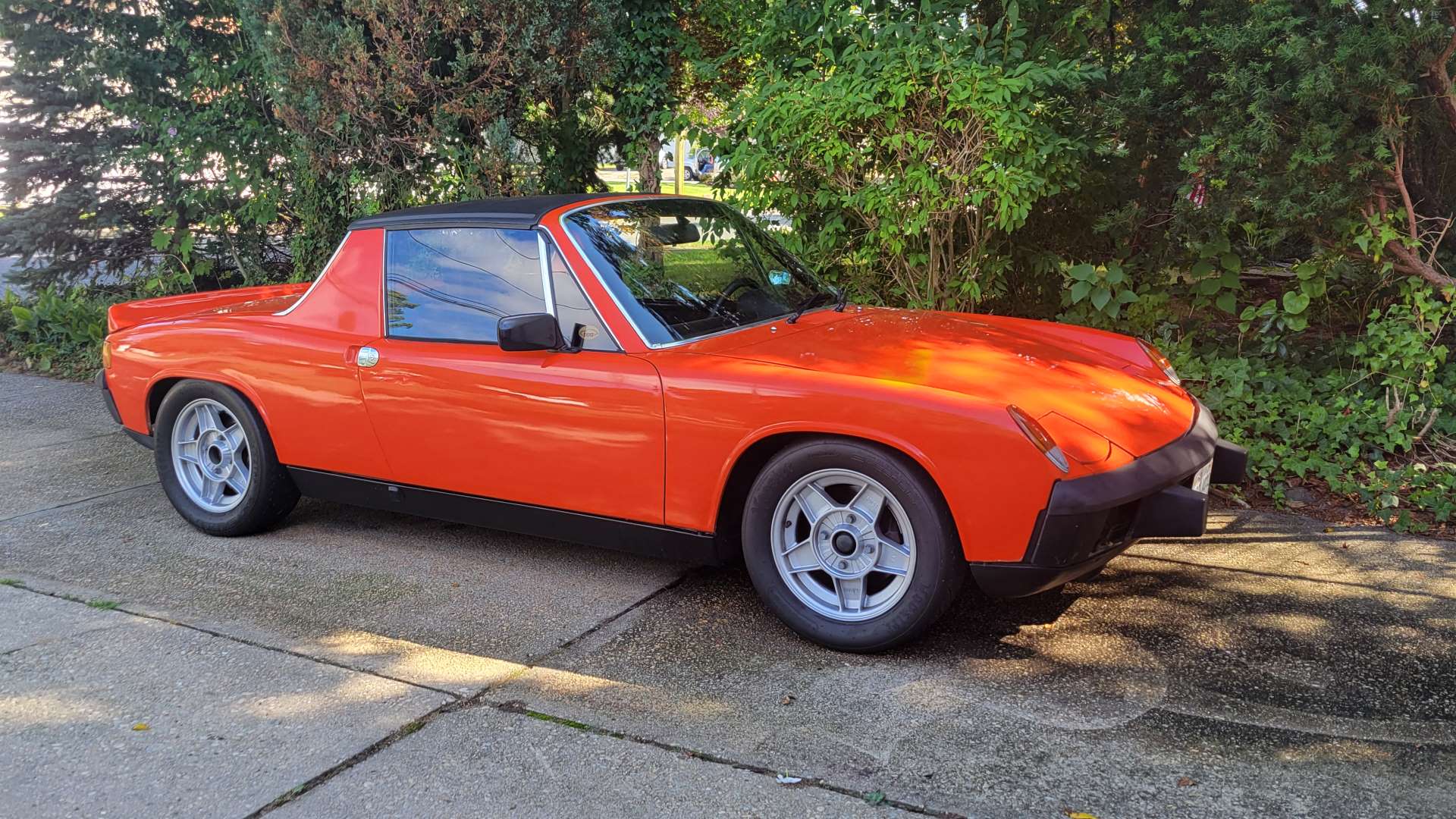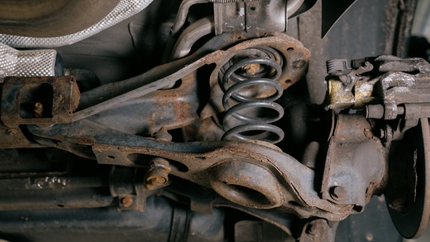- 04/16/2024
- 5 Min Read
- By: Christian Schaefer
Diagnosing Steering Wheel Shake And Vibration
A suspension or steering wheel shake, vibration, or shimmy can make for an undesirable and frankly annoying driving experience. Without a fix, the issue will worsen, and you’ll dread getting on the highway for any length of time - we've all been there! It can certainly be frightening, but it doesn't have to be; shaking can be caused by several potential problems, but each is repairable with some time and money, at most.
Why Does My Car Shake While Driving?
If there is a shake or other concerning feeling through your steering wheel, you can begin to pinpoint the problem to the front end of the vehicle. Within the front suspension are many bushings and joints meant to help with vehicle handling and comfort, which, over time, can wear, leaving "play" in them and, ultimately, that unwanted vibration. It's an unfortunate situation that can worsen by cold weather, but the cause doesn't have to be bank-breaking. Sometimes, the problem only requires a little tightening.
It's all too common for us to look beyond the simple solutions when diagnosing problems with our cars. Before you start throwing parts at your vehicle, do the following:
Check to ensure your tire pressures are correct per the manufacturer's specs.
Ensure your lug nuts are tight and properly torqued.
A severely underinflated tire could cause jarring shaking and a sluggish and wallowy response to steering input. It can happen through everyday driving, especially when those tires sit for a while. The tires will develop flat spots without rotating, causing them to go out of round. Fill 'em up and let them reshape on a drive, then see if your vibration disappears. If not, then take a closer look at your wheels. Big potholes and significant strikes will bend or crack wheels, forcing them out of balance.
It's also important to check your lugs after freshly reinstalling your wheels. Impact guns are a quick and easy way of installing lug nuts or bolts, but they are far from accurate. The only surefire way to prevent a loose nut is to use a torque wrench to tighten the lugs to the manufacturer's specification.
If none of these cause the issue, it's time to look deeper.
Determining What's Causing The Steering Or Suspension Shake
More than a few components can cause unwanted shakes or vibrations through the steering wheel, and each will have a set of characteristics that will help pinpoint the cause. Start by driving your vehicle under a few different conditions—low speeds, highway speeds, while accelerating, while braking, at a standstill, or when turning—to determine when it occurs, although it may happen under several conditions. Then, note the factors that cause it, whether it worsens as your speed increases, shakes worse with light brake pressure than heavy pressure, or only when making sharp left turns.
Suspension Clunks or Knocks While Turning Or Over Bumps
Not everything will result in a shaking or vibration; many of the suspension's bushings and joints will cause loud knocks or clunks when they go bad before getting to the point of intense vibrations. Rubber is fantastic for absorbing harsh vibrations and keeping cars smooth, but they have a service life like everything else. You won't feel the difference in the early stages unless you're in tune with your car’s vibrations. More often than not, clunks over bumps or bridge joints will be your first indication of an issue.
If something is going on, it'll make itself known, especially if it's winter. Cold weather is harsh on everything, and rubber automotive parts are especially susceptible. The temps cause them to contract and firm up, exacerbating any defects beginning to form. If you have a phantom clunk in the cold, you might want to check this out:
Steering Wheel Shaking At Low Speed Or Idle
A steering wheel vibration at idle or under light acceleration almost always indicates worn-out engine and/or transmission mounts. OE mounts are solid rubber or hydraulically filled to absorb the small but plentiful vibrations from the drivetrain. While the stiffness can vary between mounts meant for luxury cars and sports cars, Failures can be leaking, stretched, or collapsed mounts, but the intense shaking felt through the car at idle will always be the giveaway.
A lot is happening in the engine bay, so that extra drivetrain movement can damage nearby components. Although not immediately detrimental, we recommend replacing them as soon as possible. Replacement with genuine or genuine-spec parts will restore proper support to the drivetrain and provide the simplest installation means. However, anyone after performance may want to look into a stiffer mount.
Performance-oriented aftermarket drivetrain mounts come in two varieties: rubber or polyurethane. Material aside, they're both meant to stiffen the drivetrain so its mass isn't swinging around under heavy cornering and acceleration. They're often inexpensive and noticeable improvements, though the latter is through increased vibration through the chassis. It'll be different than the worn mount, more like a massage gun instead of a massive shake, so be sure you won't mind the added NVH.
Steering Wheel Shaking While Braking
A vibration while braking is a nearly universal experience for frequent drivers, but more for some than others. It can be a phantom symptom, only appearing at high speeds or under heavy braking, but the cause is always the same: your rotors aren't in good shape. The juddering comes from either a warped rotor or one full of uneven deposits; causes range from poor metallurgy to improper bedding to overheating. As you apply the brakes, the pads squeeze the damaged rotor, which then shakes about in a manner you can feel through the pedal and the wheel. We can just about guarantee that the brakes are the issue, but you should always check yourself, and the best way to do so is to pull off your front wheels and inspect your front brakes.

At first glance, a damaged rotor can have dark spots, a large lip on the edge, and uneven scoring on the rotor face. All are tell-tale signs and cause for replacement. Also, check your pads for remaining pad life. A fresh rotor is best with a brand-new pad; it ensures an old pad with improper wear or other potential issues doesn't immediately ruin your new rotor. However, if the pad and rotor have uneven wear, you should examine the caliper.
Check the caliper by attempting to retract the piston(s). They should go back smoothly and evenly. If excessive force is required to push the piston back in or brake fluid leaks from around the boot, you need to replace the caliper, or else your new brake parts will end up just like the old ones!
Steering Wheel Shaking While Accelerating
Acceleration places the maximum load on your axles. Under most circumstances, that's not a problem, but an axle with prior damage will only worsen. Damage is a strong word, as something as simple as a ripped CV joint boot is what we mean, but its eventual effects can leave you clunking everywhere you go.
The CV (constant velocity) joints allow the axle to articulate with the wheel assembly. Each joint is packed with grease and sealed with a rubber boot to ensure the joint stays lubricated and cool, no matter the situation. However, boots are a common source of failure, regardless of the make or model. They tear and allow the grease to escape, coating your suspension in the short term. If left long enough, all the grease will escape, leaving the CV dry.

A dry CV is an unhappy one. Its metallic components grind and smack into each other, accelerating wear and introducing play that shows up through a shaking under acceleration. Checking for this is as simple as jacking up your car and looking underneath. Rotate each wheel to get a good look at each boot, and replace anything that's ripped. If caught early, the CVs can be repacked with grease and covered with a new boot.
That said, rear and all-wheel-drive cars have more joints to worry about. If there's a vibration under acceleration but through the chassis and not the steering wheel, it could very well be the drive shaft (prop shaft). First-generation Porsche Cayennes are especially known for their center carrier bearing to fail, causing some pretty rough noises and vibrations. They're not alone, as BMWs have had similar experiences.
Steering Wheel Shake At Highway Speeds
A vibration felt in your steering wheel at highway speeds is regularly a wheel balance issue. Wheels are balanced with weights placed either on the inside of the wheel or on the outer lip, and even just a few unevenly distributed grams of weight can throw the wheel assembly out of balance, leaving you with a shaky highway trek. The tire balancing process is something any tire shop can handle for little cost to you. However, if there’s a shake after this process, your issue is elsewhere in the suspension.
Start by jacking up the front end of your car so both front wheels are off the ground. Then, grab your wheel at two positions across the diameter and give it a good shake. The wheel should not rock back and forth. If it does, inspect further.

Remove the wheel and examine the brakes. Examine the rotor, caliper, and pad for any odd wear near the inner and outer rotor edge, as that would point to a bad wheel bearing. Vague steering or movement from the rear end would coincide with the previously mentioned symptoms, and a loud humming or howling from the affected corner would all but give it away. If you don't have any of that, keep moving.
The next most likely culprit is the tie-rod end. Designed to transmit the steering rack input to the front wheels via a ball joint, it'll wear like any other suspension component until there's excessive play. Considering its operation directly feeds into the steering wheel, you'll be able to feel its play. Steering will be numb and sloppy, requiring mid-corner correction as the car leans over. Examine the joint's boot for any tears and see if you can move it back and forth with your hand. A fresh joint will be tough to move, so free play isn't good.
Steering wheel shake and vibration don't have to be a dreaded issue if you take the time to narrow down the potential causes one by one. It could be as simple as an out-of-balance wheel, so don't panic. Even if it is more serious, the parts in question are relatively simple to replace and easy to find on fcpeuro.com. Be sure to subscribe to our YouTube channel and follow along with the blog for more great content!


